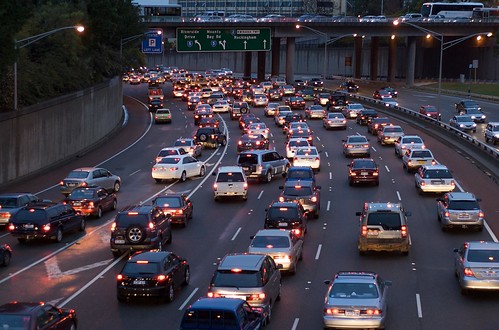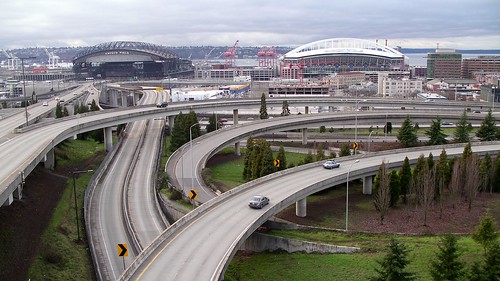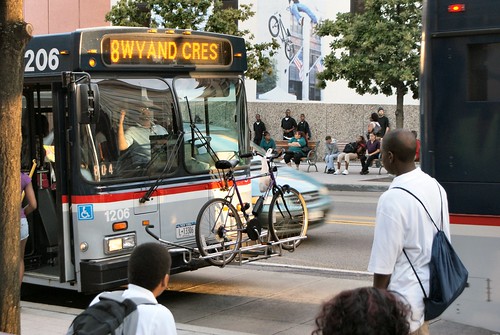Ready for another round of “Legislative Chicken”? With only 8 days left in the life of SAFETEA-LU Legislation, Oberstar proposes a three month extension
(Sources Contributing to this Hybrid Report: Streetsblog; PBS -The Dig; Journal of Commerce)
Every six years the law authorizing national transportation policy and funding needs renewal. The current law expires Sept. 30 — in nine days.The House will consider a three-month extension of the current highway bill rather than the 18-month extension the administration and Senate want. The extension will avoid a collapse of highway spending on Oct. 1, according to House Transportation and Infrastructure Committee press secretary James Berard.
Rep. James Oberstar (D., Minn.), Chairman of the House Transportation and Infrastructure Committee, is staunchly against an 18-month delay. As a result, it is likely he will propose a three-month extension later this week.
The 18-month extension is favored by the Senate and White House. A Senate spokesman said that the four committees with jurisdiction over the highway bill have reported legislation to the floor, but the bills have not been up for debate before the full body.
Will this month’s version end with the House again bowing to the Obama administration’s preference that a new transport bill not be considered until early 2011? Now, as in July, the deck is stacked against the lower chamber of Congress. The U.S. Chamber of Commerce and other business interests are behindOberstar’s three-month plan, but their lobbying in favor of a gas tax increase has not yet succeeded in rousing a reluctant Congress.
Meanwhile, State highway officials warn that unless Congress acts, they will lose $8.7 billion in money allocated for projects ranging from interstate highway maintenance to safe routes for school buses on Oct. 1.
The Federal Highway Administration announced that it will rescind funds that have been budgeted but not obligated for highway contracts on Sept. 30. The action will not be affected by congressional legislation to extend the highway law known as SAFETEA-LU. Tony Dorsey, spokesman for the American Association of State Highway and Transportation Officials (AASHTO), said preventing the loss will require separate legislation.
An AASHTO press release on this subject notes that all 535 members of the House and Senate received an urgent letter from AASHTO yesterday, requesting that Congress repeal an $8.7 billion rescission of highway contract authority. The rescission was written into SAFETEA-LU, the highway and transit authorization bill passed by Congress in 2005.
In his letter, AASHTO executive director John Horsley contends “…an additional $8.7 billion rescission will result in substantial, real program cuts, not merely a reduction of unused dollars on the books. Provisions in section 1132 of the Energy Independence and Security Act of 2007, which require that the states apply the rescission proportionately across all programs, will exacerbate the problem by further reducing state discretion to make reductions according to priorities. The letter also states that the rescission must be repealed or “it will nullify the benefits from economic recovery efforts.”




